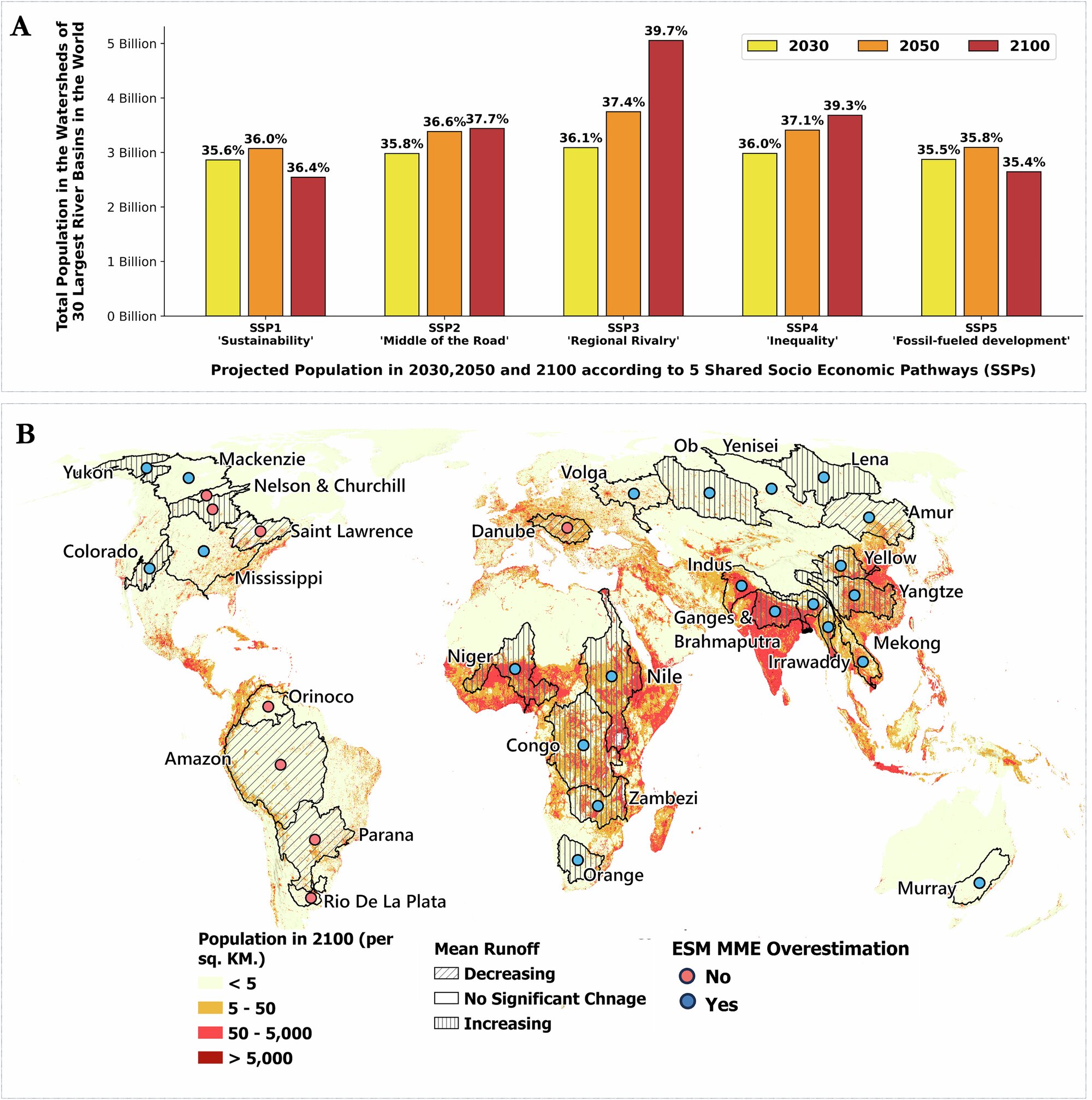Summary
In an analysis of the best available Earth systems models, Northeastern researchers found that by the turn of the next century, 850 million people will feel the effects of declining runoff from the world’s major rivers.
Source: Phys.org

AI News Q&A (Free Content)
Q1: What are the primary causes of water scarcity projected for 2100, and which regions will be most affected?
A1: By 2100, water scarcity is expected to be driven by a combination of climate change, population growth, and increased agricultural demand. Regions like Sub-Saharan Africa, Central Asia, and parts of North Africa, which already experience economic or physical water scarcity, are projected to be severely affected. Water scarcity will result from mismatches between water availability and demand, exacerbated by climate-induced droughts, deforestation, and water pollution.
Q2: How does the Water Health Open Knowledge Graph contribute to addressing water scarcity issues?
A2: The Water Health Open Knowledge Graph (WHOW-KG) is a semantic knowledge graph that models data on water consumption, pollution, and disease rates. It supports applications ranging from knowledge discovery to decision-making, providing valuable resources for researchers and policymakers. Developed under the EU-funded WHOW project, it integrates open data to address global sustainability challenges, particularly those tied to water scarcity and quality.
Q3: What insights have recent Earth system models provided about future water scarcity?
A3: Recent Earth system models emphasize the complexity and uncertainty in predicting water scarcity due to climate variability and socio-economic factors. They highlight that over 200 U.S. counties could face water scarcity in the coming decades due to rising temperatures and demand. These models underscore the challenges in accurately projecting water demand and supply at regional scales, emphasizing the importance of integrating climate data with socio-economic trends.
Q4: Why is Africa particularly vulnerable to future water scarcity, and what are the implications?
A4: Africa's vulnerability to water scarcity stems from its rapid population growth, economic constraints, and climatic challenges. By 2100, Africa's population is projected to exceed 3.8 billion, intensifying water demand. Economic limitations and climate change exacerbate the scarcity, affecting agricultural productivity and health. This vulnerability has significant implications for economic development and food security across the continent.
Q5: What role does climate change play in exacerbating water scarcity, and what measures can mitigate its effects?
A5: Climate change exacerbates water scarcity by altering precipitation patterns, increasing evaporation rates, and causing more frequent droughts and floods. To mitigate these effects, measures such as improved water management, investment in desalination and wastewater reuse, and international cooperation on water conservation are essential. These strategies aim to enhance water availability and reduce the impacts of climate-induced scarcity.
Q6: How can advancements in data infrastructure aid in managing water resources in drought-prone regions like California?
A6: Advancements in data infrastructure, such as the California Data Collaborative, enable the integration of water use data across multiple providers. This supports water managers in ensuring water reliability by providing comprehensive insights into consumption patterns and available resources. Such infrastructures facilitate proactive planning and response to droughts, helping to secure water supplies in regions facing significant water uncertainty.
Q7: What are the health impacts of water scarcity on communities, and how can they be addressed?
A7: Water scarcity affects health by limiting access to clean water, which can lead to waterborne diseases and malnutrition. Communities facing scarcity struggle with hygiene and sanitation, increasing disease transmission. Addressing these impacts requires improving water infrastructure, promoting hygienic practices, and ensuring equitable water distribution. International health organizations emphasize the need for sustainable water management to protect public health.
References:
- Water scarcity - Wikipedia
- The Water Health Open Knowledge Graph
- Water Stress on U.S. Power Production at Decadal Time Horizons




